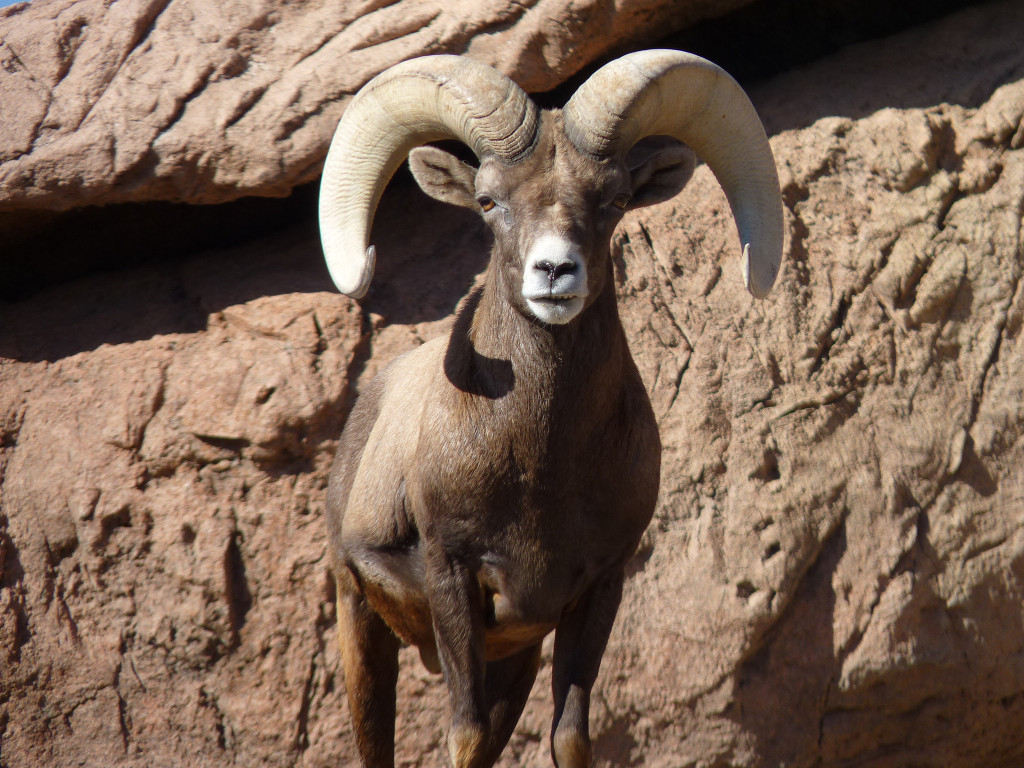
Sierra Nevada bighorn sheep were never a huge presence in California. They tended to concentrate in loosely connected pockets scattered through the Sierra Nevada Mountains. But over time, the connections were severed. Hunting and diseases spread by domestic sheep diminished the herds and predation by mountain lions took a toll. Eventually the subspecies was down to its last 100 individuals.
California wildlife biologists have been working to restore robust herds by moving animals into 12 adjacent chunks of habitat. At this point, there are now 600 of the bighorns, about half of the historic level.
Instead of using a captive breeding program, the biologists are extracting wild sheep, mostly pregnant ewes, from healthy herds and using them to start or augment other herds. They can’t depend on the bighorn to move to new grounds on their own because they don’t like migrating though forests where mountain lions might pounce.
Instead, the sheep are tracked with radio collars by helicopter, and netted from above. A helicopter crewman then blindfolds the sheep, ties up their legs and gets them into a sling. They are then transported to a camp where they undergo medical tests and evaluations. The sheep are then trucked to a location close to their final destination and another helicopter ride takes them to the remote areas where they are released. Some of these locations are in Yosemite and Sequoia National Parks.
California Fish and Wildlife biologists estimate that when around 30 more ewes are properly redistributed under this program and contribute to their new herds, the bighorn will be rescued from endangered status.
***********
.
Web Links
Bighorn Sheep Are Helicoptering Their Way Back From the Brink
Photo, posted December 23, 2012, courtesy of B.D. via Flickr.
.
Earth Wise is a production of WAMC Northeast Public Radio.
